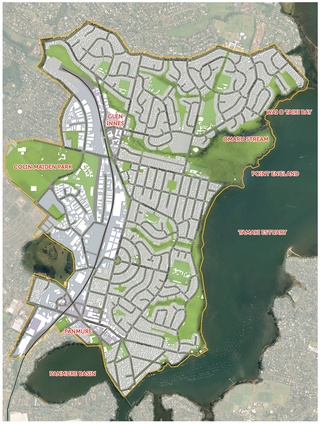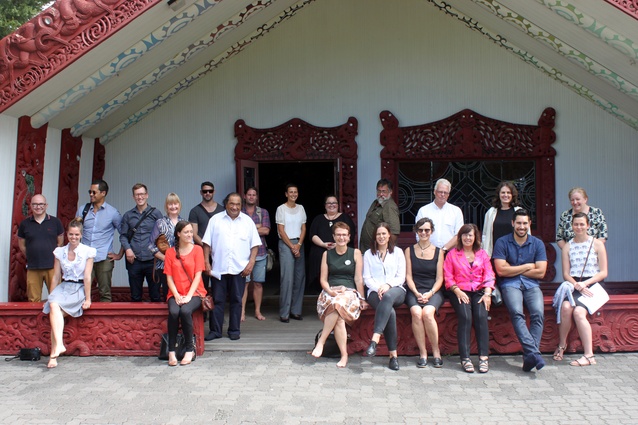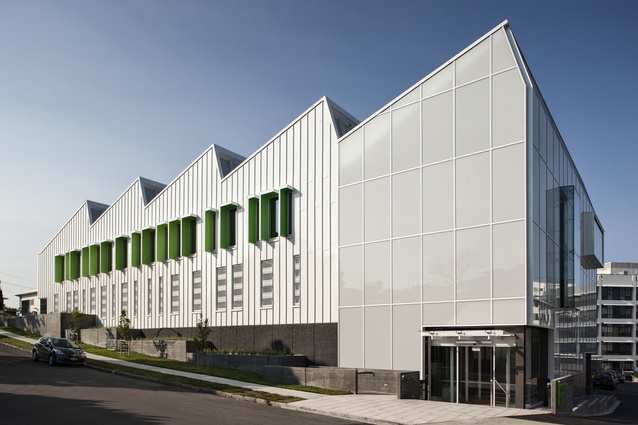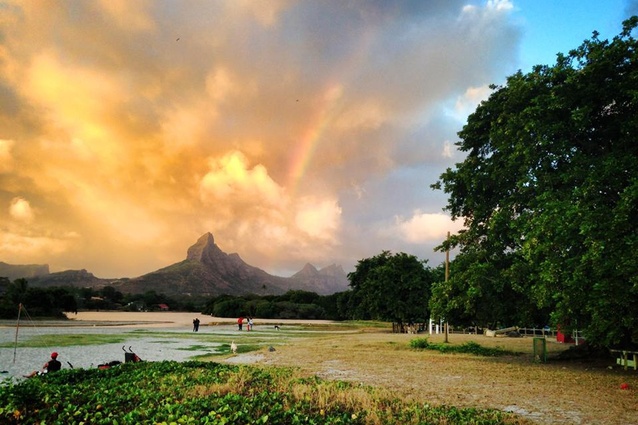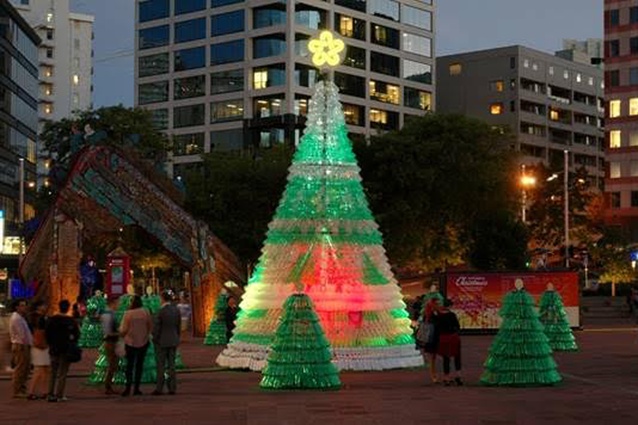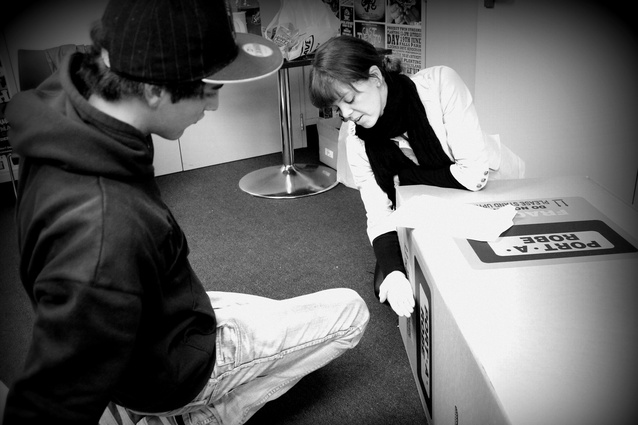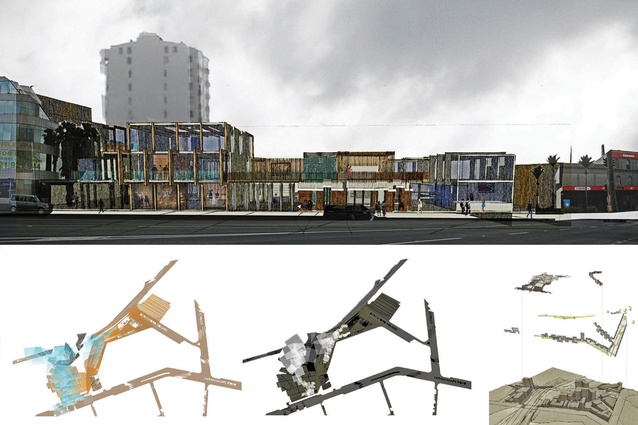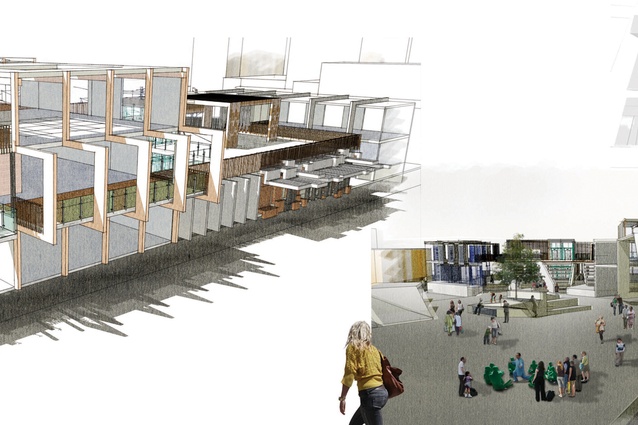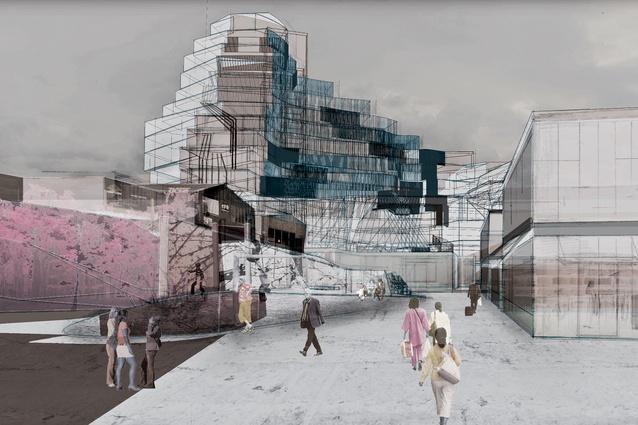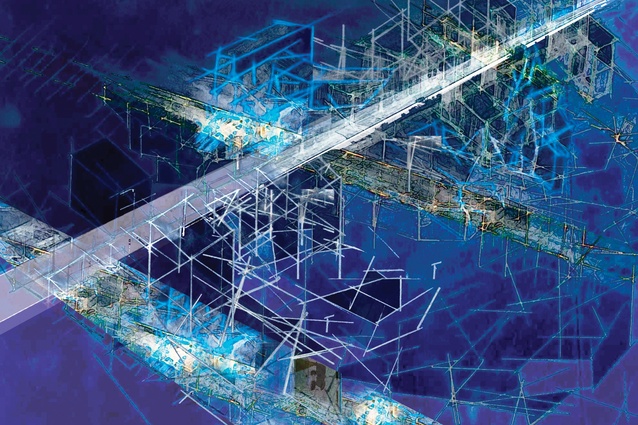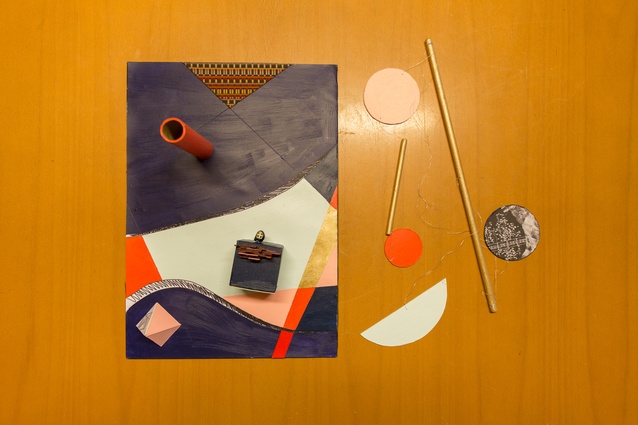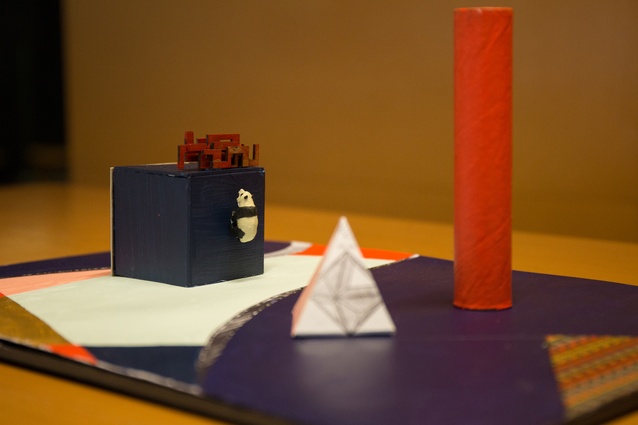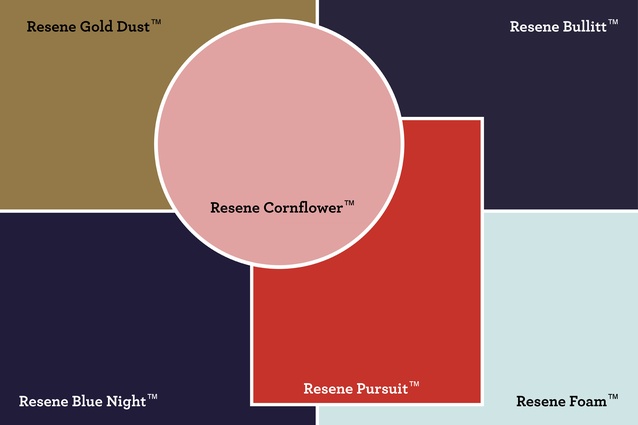On the Rise: Haley Hooper
The ArchitectureNow On the Rise series, supported by Resene, focuses on up-and-coming young designers and architects from across New Zealand. For the first interview in the six-part series, we talk to Haley Hooper, a graduate urban designer.
Haley completed a Master of Architecture at Unitec in 2011 and has been working in her current role at Jasmax's Auckland studio for almost two years.
Amelia Melbourne-Hayward: What were the influences that drew you to the architectural profession? Was it your family or background, or any childhood experiences?
Haley Hooper: My parents completed a lot of house renovations and they did a lot of the work themselves, so my brother and I often got roped into painting and scraping weatherboards back. From a young age, after putting the careers of vet and detective to the wayside, I decided as a teenager I wanted to be an architect!
I went to England on a gap year after high school and being immersed in a built environment that has so much history really confirmed for me that I wanted to understand what goes into making amazing buildings.

AMH: You completed a Master of Architecture at Unitec, what interested you about the urban design discipline?
HH: All through my studies I was always interested in urban design – big picture, broader-scale type things, and civic, social motivation of the discipline also really drew me in. After finishing my degree I worked across a number of different applications of architecture such as commercial, residential and interiors.
When the urban design role came up at Jasmax, I thought, ‘this is my chance to align my job to my areas of interest’. I don’t really see urban design and architecture as separate as much as other people do. I think one embodies the other and vice versa.
AMH: How are you liking it so far?
HH: It’s really good. The diversity of projects I’ve worked on has been rewarding, and with things that are of civic importance or public realm projects, you’re often working with broad stakeholder groups and local government entities. Sometimes working in architecture I had struggled a little bit with the predominant pursuit of function and aesthetic and the inward, sometimes self-oriented nature of private projects.
I am aesthetically motivated but I also enjoy contributing to design that benefits the collective notion of society and the community at large. Then again, there are moments in urban design where I’m like, “I just would love to do something small and pretty! Go figure!”
AMH: Can you describe your architecture career thus far?
HH: I finished my Masters and then went travelling in Chile for five months. When I returned I worked for Wingate and Farquhar in Parnell, and that was a type of first love for me; my first job in architecture. I loved the work environment at WF; my directors were awesome mentors, and they gave me a really good overview of the business of architecture. From there I got offered a position in Mauritius working on a hotel refurbishment for the Hilton, which was completely out of the box. I was over there for four months.
AMH: How did you find that experience – working overseas as such a young graduate must have been challenging but exciting?
HH: When you take the whole thing, it was an amazing experience, but there were definitely parts of it that were really challenging. It was such a complex collection of cultures working together and there were different power structures at play. We were young designers learning to work between a number of sometimes opposing design directives.
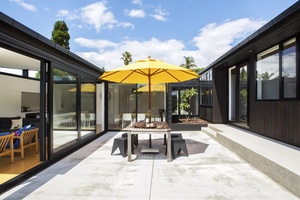
After I returned from Mauritius I worked for Dorrington Atcheson Architects, they mainly work in residential. Working there was a good opportunity to follow and develop some responsibility for the architectural process from contract initiation and concept development through to construction and contract observation. From there I moved on to Jasmax almost 2 years ago now.
AMH: What areas of urban design do you most enjoy working in?
HH: I’m quite biased towards the projects that have Māori contribution, because that’s another area that I’m passionate about. I think Māori are looking to do legacy projects with long-term outcomes, so they’re not doing something purely for profit, which means that they look at the project from another perspective.
I also really enjoy public realm projects, whether it’s the city rail link project, housing regeneration or town centre renewal. With the Unitary Plan and the changes that are happening across Auckland there is so much transformation taking place.
AMH: There certainly is a huge amount of change going on right now, which is fantastic. What sort of urban design improvements do you think Auckland could most do with at present?
HH: Public transport and adequate housing are critical right now, but they are a given, a necessity. Probably connectivity and distinctness between precincts, and also really acknowledging the urban nature of the geographical location that Auckland has. One of the biggest inspirations that we have as a city is the fact that the landscape beneath us, around us, is just incredible.
We should always look to accentuate and celebrate this through our urban development and through built form. In our planning of character and place, we should identify with the landscape intricately in order to try and create places and spaces that have distinction, not just stylised, industrial cool.
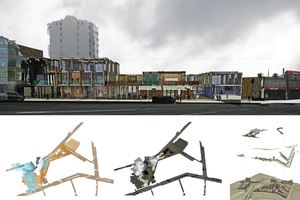
AMH: Yes, that brings to mind Barcelona, which has so many different areas that feel quite distinct and unique and that give the city its incredible flair. Is that the sort of thing you’re talking about?
HH: Absolutely. I think it’s interesting to see what’s happening on K Road now, a really edgy cool part of Auckland, but it has always been that way, doing its own thing; it’s not really us developing that character. I think it’s more about looking at the precincts in Auckland that are lacking in urban quality and character and asking how we can help them generate and strengthen their own identities, like K Road has. How we can activate them and encourage their own inbuilt eccentricities.
AMH: What are some of the most challenging parts of the role for you?
HH: You need to be able to understand large concepts and the decisions that are happening with local council or the head of a development department, but at the same time you also need to be able to apply your practical skills in terms of actually drawing the thing; the minute details.
This is a typical designer’s statement, but it is also challenging to have a vision of what you would like to see something be and then having to make that fit (or squeeze and bend) into the project constraints, be they social, political, budget related or restriction of planning controls. I guess we’re always searching for the best outcome in the given situation – there are always going to be constraints; that’s the beauty of design, negotiating them.
AMH: What sort of projects are you currently working on at Jasmax?
HH: We work across a lot of different areas, such as master planning, housing developments, city rail link or development capacity studies, design guide advice.

I’m also involved in Māori design consultancy – Waka Māia at Jasmax – in addition to my urban design role. The group – Rameka Alexander Tu’inukuafe, Brendan Himona, Elisapeta Heta and myself – is offering our company the opportunity to upskill and educate themselves in tikanga Māori, but also helping our designers to feel more comfortable and confident in facilitations with iwi and that type of thing. It’s neat because that means you might not be specifically working on a project but you can come in and help with the facilitation or planning side.
AMH: How does being a part of Ngā Aho and the Waka Māia inform or influence your professional work?
HH: It’s been a huge influence in the last two years. At university I was involved with Māori things through lecturer Rau Hoskins, and since I’ve come to Jasmax I’ve been a lot more active with Ngā Aho.
A kawenata (Memorandum of Understanding) has recently been created between the New Zealand Institute of Architects and the Māori design network [Ngā Aho], which is great, because it’s about building a relationship in order to have a better partnership between the two entities. I think it will help promote Māori interests across architecture in general.
Jasmax has been very supportive and encouraging of our pursuit, and their flexibility has enabled us to explore this other area of our careers that gives us a sense of satisfaction but that also gives back to the company and to the broader community.
AMH: Can you tell me some of your influences? What architects, designers or creators do you admire?
HH: I have a collection of people that I’m inspired by as opposed to one godfather! I love Rem Koolhaas, who I think is awesome for his philosophies and architectural commentary but I also like the bold formal statements that he makes with his buildings, he’s not afraid to do something strong.
Alvar Aalto and Renzo Piano are both great. I also really like Manuel de Sola-Morales, an architect and urbanist who worked with the idea of “urban interventions” – making precise moves to generate bigger change. And Paulo Mendes da Rocha, who works and speaks like a godfather. In terms of New Zealand architects, I have a real thing for Neville Price, and John Scott is another big influence.
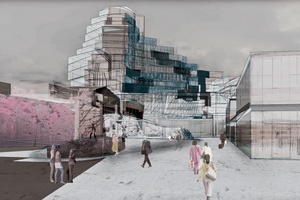
AMH: What overseas urban design projects do you admire and think that we could take cues from here?
HH: The Superkilen project in Copenhagen is great. I appreciate people who have the confidence to do something outlandish and it works. The High Line in New York is pretty cool for adaptive reuse. And, as you were saying, Barcelona is just a collection of amazing spaces. I think Melbourne is also quite interesting in terms of contemporary cities that have changed their persona.
AMH: What do you wish you had been told about the profession before you started studying?
HH: That it’s awesome, but I don’t think I realised how committed you have to be to it. It does require a really strong sense of commitment and it would have been nice to go into it knowing that. It is a slow graft. I think it’s also good to know how diverse architecture is, that although it’s a specific degree, its job opportunities are manifold, and becoming more and more so I think.
AMH: Do you have any advice for anyone that is currently studying architecture?
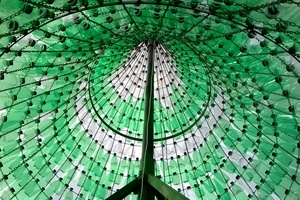
HH: Architecture is such a broad field and I think that as a student you don’t understand all the different areas that you could work in. If you take more direction and personal ownership over the area that you’re interested in, you can actually find a path that suits you better and aligns with your design strengths, as opposed to letting the industry determine where you end up.
Another thing I would add is be confident in having an opinion, because that’s what creative people are supposed to be about, providing a perspective. I think even within architecture there’s a kind of paradox of it being an artistic expression but then there’s a really conservative side of it, and part of being in practice can sometimes push people into that systematic conservative place. But it’s still really important to keep having your own design opinion, and finding ways to express yourself.
AMH: You’ve been involved in several side projects besides your day job. Do these allow you to express your creativity in other ways?
HH: Yes, definitely. When I first came out of university myself and a group of four other graduates set up a group called “Charrette” to help Zeal, a youth education trust, try to open a youth centre in Takapuna. That was a great opportunity, and meeting with Zeal and council gave us that feeling of autonomy and freedom that you don’t always get at a day job.
I think that doing the side projects are really important; the more stuff you can do on the side when you’ve got the time, the more you feel inspired and the connections that you make start to influence what you do in practice.
AMH: As part of the series we asked you to create a type of mood board to illustrate your influences and inspirations. What ideas are behind this and why did you use these particular Resene colours?
HH: It is a combination of influences of things and colours I like, of quirk, of line, of shape and of story, with a sense of wonder. The board represents the 3rd dimension, and it has ended up like a scene that can have different moments depending on how it’s set.
Al
It is inspired by a sense of fun, and by László Moholy-Nagy, and the late works of Afro-Basaldella, all artists working across the Modernist period. I enjoy their inquisitive use of geometries, their bold use of contrasting colours, as well as their exploration of playful spatiality. And everyone needs a bit of gold-dust in their lives!
AMH: Finally, what are five essential things that without which you’d be a bit lost and wouldn’t be able to do your job well?
HH: Le Tournedisque (music selector), and I’d be lost without my black ink pen. My notebook is essential. I don’t really wear lots of jewellery but my earrings are my thing; odd earrings, I feel naked without them. And, one more… I can’t live without Earl Grey tea, and bubbly water (that’s two)!
For the second On the Rise interview with Geordie Shaw, see here. Read the third interview with Maria Chen here, and the fourth interview, with Ed Dromgool, here.
The ArchitectureNow On the Rise series is generously supported by Resene.


